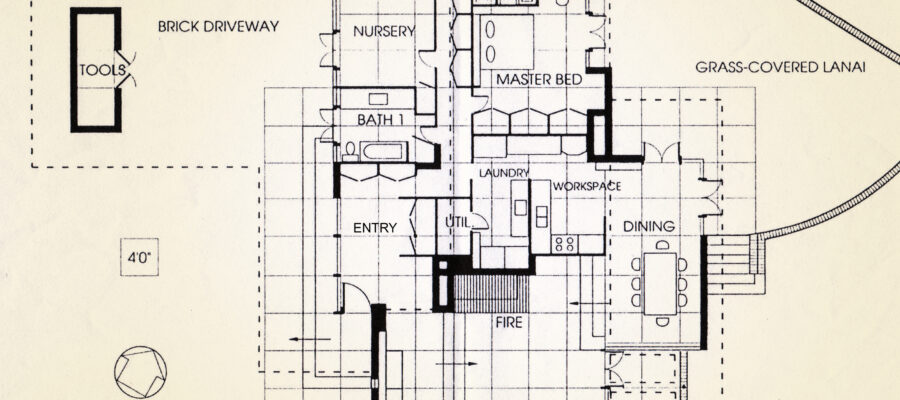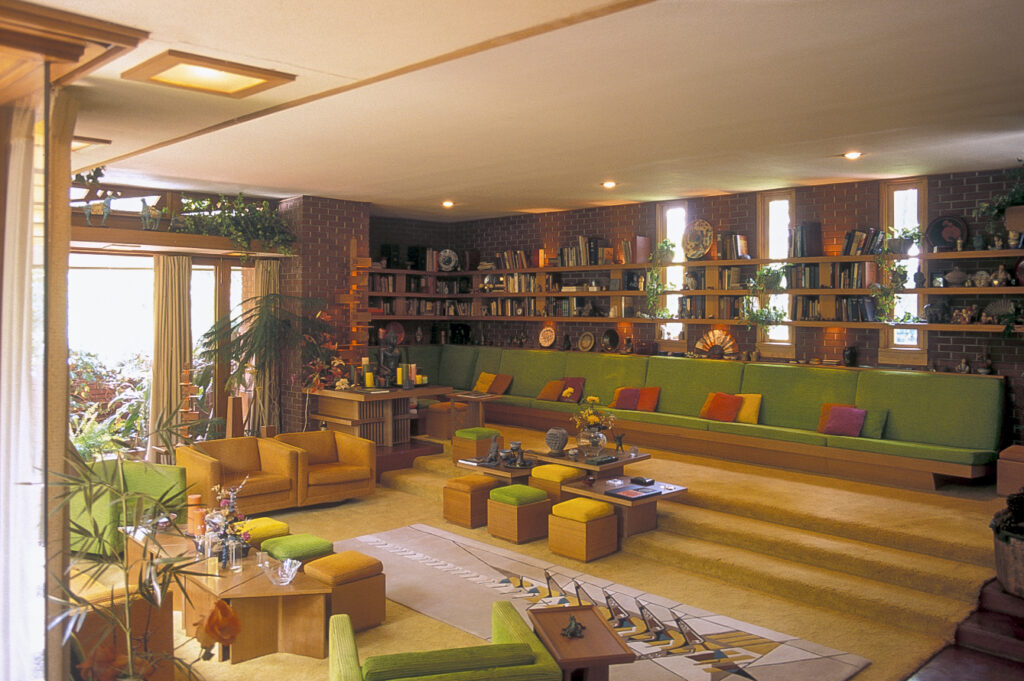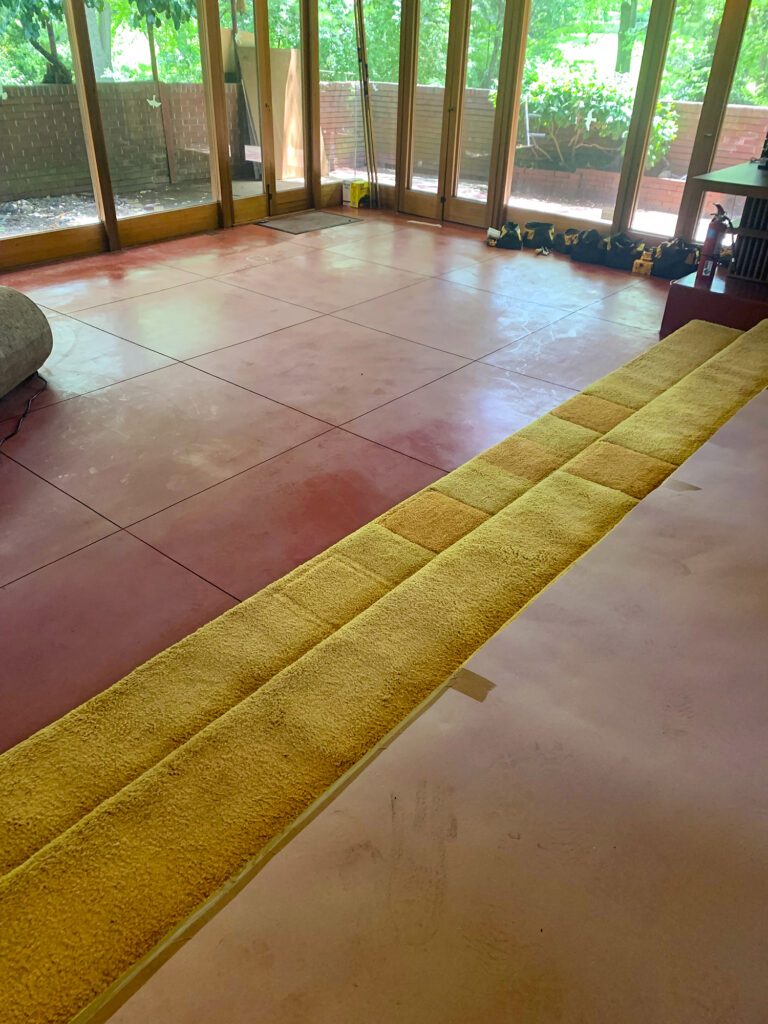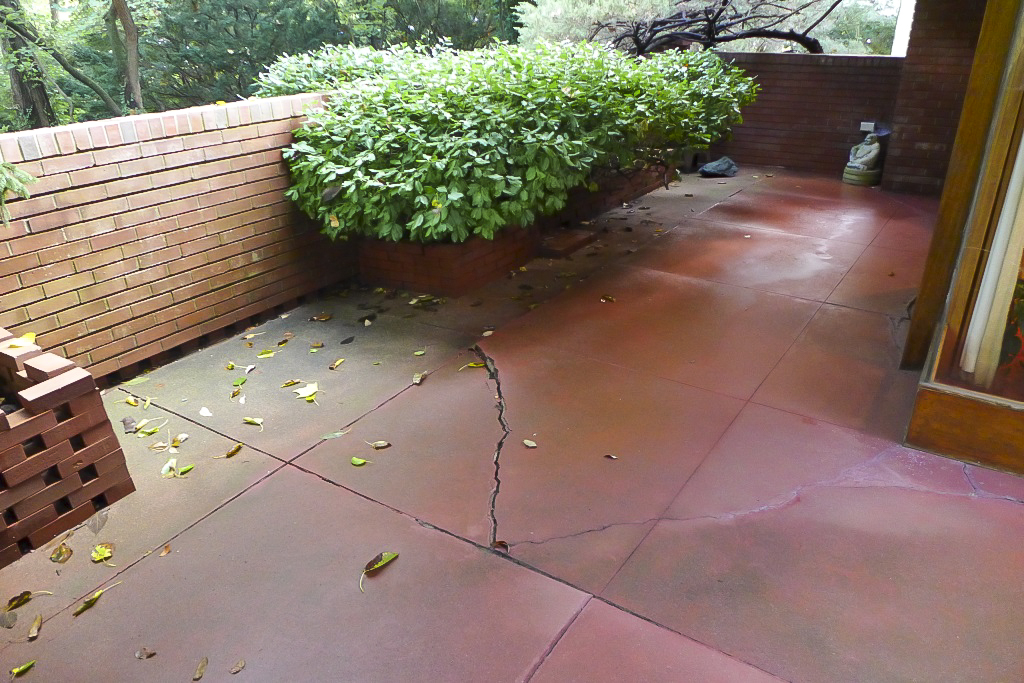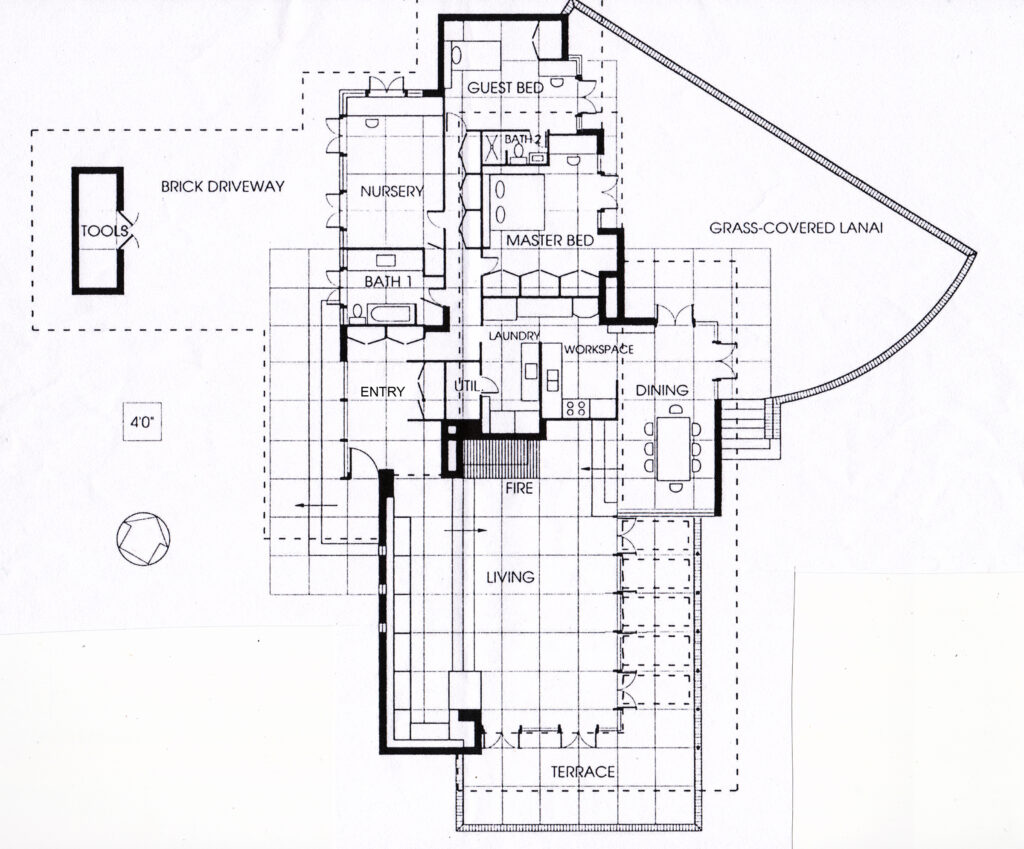Geometry and grid systems played an integral role in the work of Frank Lloyd Wright from his earliest designs to those, like Samara, created at the end of his career. Many scholars attribute this feature to Wright’s introduction to Froebel gifts as a young child. Friedrich Froebel, the influential educational reformer who introduced the concept of kindergarten, developed a series of three-dimensional geometric shapes as instructional tools for early childhood development. Children sometimes used a gridded paper or special tabletop for arranging the shapes. In his Usonian designs, Wright used a grid to create a formula that would reduce building costs and simplify the construction process.
The plans for Samara show it is built on a 4-foot by 4-foot square grid system, and we were able to confirm this when we removed the living room carpet for restoration work. Notice how the grid is clearly scored into the concrete floor. The grid doesn’t stop with the interior of the house; it flows seamlessly into the outside terrace as well—Wright’s way of blurring the interior and exterior spaces.
Photographs taken in 2019 indicated structural movement beneath the terrace slab. The 2022 restoration will stabilize the foundation and repair the cracked concrete, allowing us to reopen the terrace to visitors. Brandt Construction is working closely with Harboe Architects to ensure new materials replicate the existing ones in terms of color and composition.
